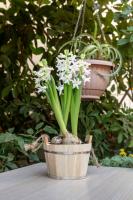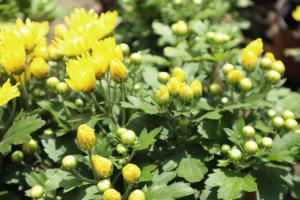How Close to Plant Semi-Dwarf Fruit Trees
When it comes to planting semi-dwarf fruit trees, one of the questions that homeowners and gardeners often ask is how close should the trees be planted to each other. The answer to this question depends on several factors, including the type of fruit tree, the size of the semi-dwarf rootstock, and the spacing requirements of the particular fruit species.
The Importance of Proper Spacing
Spacing is an essential factor to consider when planting fruit trees. Proper spacing is crucial for ensuring that the trees grow appropriately and produce a bountiful harvest. When fruit trees are planted too close together, they may compete for resources such as nutrients, light, and water, resulting in stunted growth, poor fruit quality, and reduced yields.
On the other hand, when fruit trees are planted too far apart, it may lead to wasted space, making it challenging to maximize the number of trees that can be grown in a given area. It can also increase the distance between the trees, making it harder to manage and harvest the fruit.
The Ideal Spacing for Semi-Dwarf Fruit Trees
The recommended spacing for semi-dwarf fruit trees varies depending on the type of fruit tree and the size of the rootstock. In general, semi-dwarf fruit trees should be planted 10 to 15 feet apart to ensure adequate space for growth, but this distance can be adjusted up or down depending on the type of fruit tree being grown.
For example, semi-dwarf apple trees may be planted 12 to 15 feet apart or closer if planted in a hedgerow style. On the other hand, semi-dwarf peach trees should be planted further apart, around 15 to 20 feet, to allow for their broader shape and pruning needs. Other fruit trees such as pears, plums, and cherries should be spaced similarly to apples.
Tips for Planting Semi-Dwarf Fruit Trees
When planting semi-dwarf fruit trees, there are several tips to keep in mind to ensure success. First, make sure to dig the planting hole two to three times the width of the root ball to allow for proper root growth. The depth of the hole should also be no deeper than the height of the root ball.
Second, ensure that the root flare or the point at which the tree's trunk starts to flare outwards from the roots is above the soil level. Otherwise, this can lead to tree stress and potential fungal or insect problems.
Third, water the newly planted fruit trees thoroughly and regularly for the first two to three years to promote growth and establish healthy roots. Lastly, keep the trees well-mulched and ensure they receive adequate sun exposure to maximize fruit production.
The Bottom Line
Overall, planting semi-dwarf fruit trees involves careful consideration of spacing requirements to ensure that they grow appropriately and produce an abundant yield. By understanding the ideal spacing for each type of fruit tree and following proper planting and care techniques, homeowners and gardeners can enjoy healthy and productive fruit trees for years to come.

 how many times do yo...
how many times do yo... how many planted tre...
how many planted tre... how many pine trees ...
how many pine trees ... how many pecan trees...
how many pecan trees... how many plants comp...
how many plants comp... how many plants can ...
how many plants can ... how many plants and ...
how many plants and ... how many pepper plan...
how many pepper plan...






























